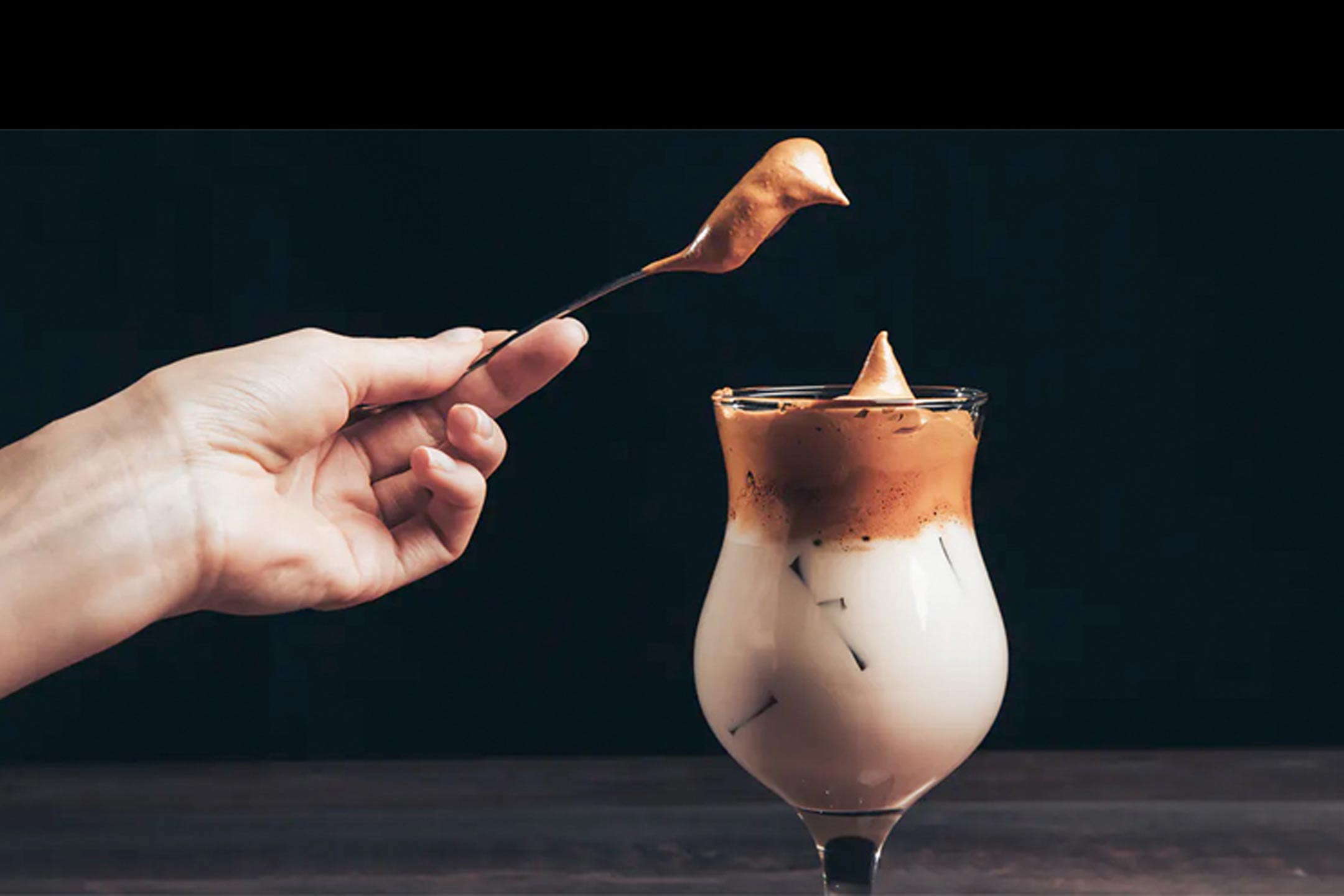
24 Apr What is Dalgona coffee?
Katherine Kirkwood searches high and low to find the whipped coffee trend taking over the internet during coronavirus isolation
If you’ve scrolled through Instagram, TikTok or Facebook lately, there’s a good chance you’ve seen a video of someone whipping together sugar, instant coffee and boiling water. This concoction is spooned over iced milk to create the foamy drink known as Dalgona coffee.
According to Google Trends, “Dalgona coffee” has become the most searched type of coffee worldwide, overtaking previous highest peaks for all other kinds of coffee.

Shutterstock
Searches worldwide surged by 1,800% in mid-March and grew a further 1,700% in mid-April.
So what is Dalgona coffee, and why is it taking the internet by storm?
The food craze born of isolation
Dalgona coffee is reportedly named after a similarly sugary and foamy South Korean candy.
I’ve never tasted it but it’s not hard to see the visual appeal: the ingredients are mixed together to create a whole new foamy, silky, pillowy substance, the kind of transformation that always does well on social media.
Having studied food trends for almost a decade, I think the Dalgona coffee craze has everything to do with our current COVID-19 induced isolation. It’s a way to get a coffee that looks cafe-style but can be achieved with the very cheapest instant coffee and some basic household ingredients.
Like so many social media food trends, it’s about what can we share with our networks, what can we say we have done and experienced – even while stuck at home.
And that carries a certain amount of social capital, especially when other kinds of foodie Instagramming (like photographing beautifully displayed cafe foods) is off the menu. It might not be your cup of tea, but to have these experiences recorded on your social media feeds is very powerful for some people.

giphy.com.
Not the first food trend, won’t be the last
Dalgona coffee is the latest in a long history of food-related social media trends, including mukbang videos – in which the host consumes often vast amounts of food while interacting with the camera.
There’s also food-related ASMR (autonomous sensory meridian response, where certain audio stimulus is said to soothe some people). In these videos, the host records the sound of every crunch, crackle, slurp and swallow for the benefit of their online followers.
Food videos can be very satisfying to watch and many users report getting lost in them for hours. In a world where so much of our food thinking is around what we can’t eat or do at the table, food videos offer a release – they’re a form of vicarious consumption. You get to understand and feel the senses at play without the health implications.
Food trends online are often not really about real life. There’s a great many people who may not really enjoy an incredibly sweet instant coffee in real life but have watched a full Dalgona coffee video with relish.
To me, the Dalgona coffee trend is part of this isolation trend of “making do”. We can still have our Instagram-worthy treats while staying home. To enjoy the satisfaction of watching ingredients transform into something different and sometimes unexpected – and share the experience with friends.
![]() Katherine Kirkwood, PhD Candidate, Queensland University of Technology
Katherine Kirkwood, PhD Candidate, Queensland University of Technology
Main Image: Shutterstock
This article is republished from The Conversation under a Creative Commons license. Read the original article.

